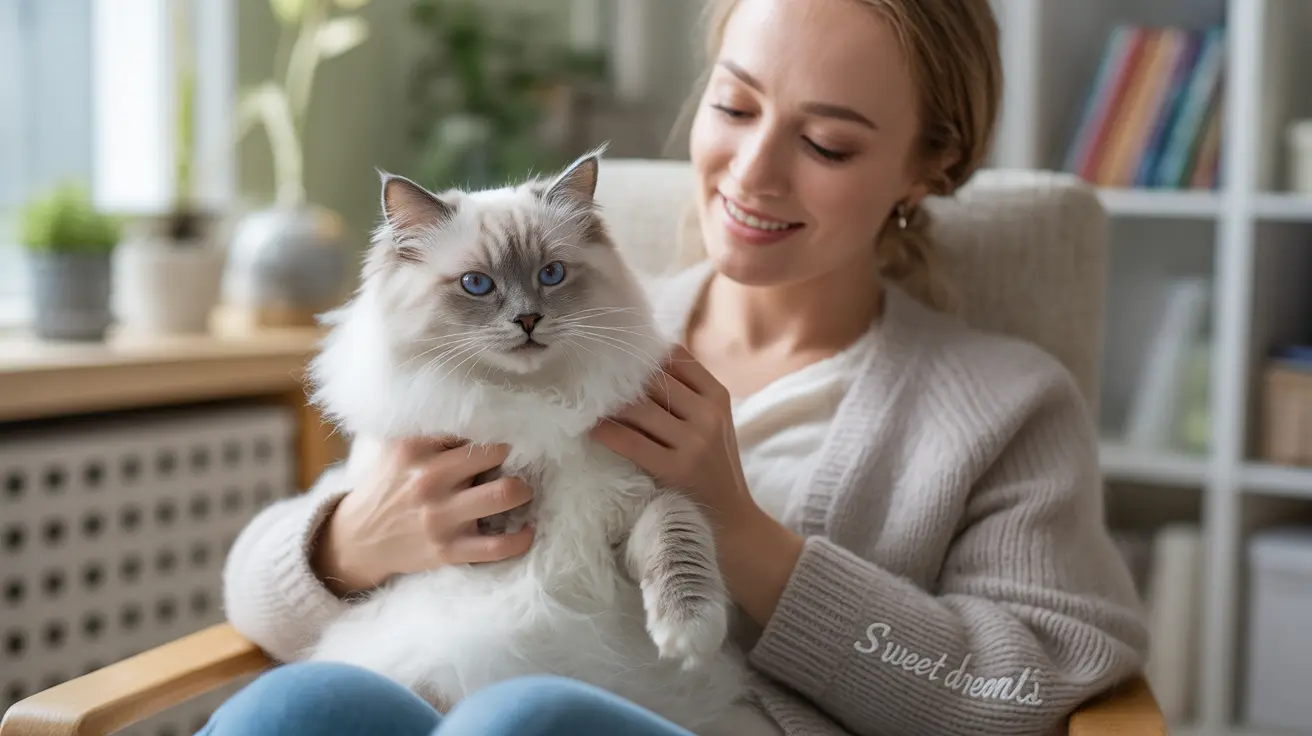Understanding Your Cat's Lap Potential
Every cat has unique personality traits and comfort levels when it comes to physical closeness. Certain breeds, like Ragdolls, Persians, and Scottish Folds, are genetically predisposed to being more affectionate and enjoying lap time. However, regardless of breed, early socialization and positive experiences play crucial roles in determining whether a cat will embrace lap sitting.
Creating the Perfect Environment for Lap Training
Successful lap cat training starts with establishing the right environment. Keep your space calm and quiet, free from sudden noises or movements that might startle your cat. Choose a comfortable spot where you can sit consistently, and consider using a soft blanket that carries your cat's familiar scent.
Temperature also matters – cats naturally seek warm spots, making your lap an attractive option during cooler times of the day. Ensure the room temperature is comfortable but not too warm, as cats may avoid lap sitting if they're already feeling hot.
The Step-by-Step Training Process
Building Trust Through Positive Association
Begin by placing treats near your lap while seated. As your cat becomes comfortable approaching you, gradually move the treats closer to and eventually onto your lap. Use high-value rewards that your cat particularly enjoys, making the experience extra special.
Establishing a Routine
Choose specific times of day for lap training sessions, ideally when your cat is naturally calm and receptive. After meals or play sessions often work well, as cats may be more inclined to rest and cuddle during these times.
Advanced Techniques for Reluctant Cats
For cats that show resistance to lap sitting, try these proven strategies:
- Start with side-by-side sitting before attempting lap time
- Use interactive toys to encourage closer proximity
- Practice "invitation only" approaches, letting your cat initiate contact
- Reward any progress, no matter how small
Maintaining Long-Term Success
Once your cat begins showing interest in lap sitting, consistency becomes key. Maintain regular sessions, continue offering occasional treats, and always respect your cat's boundaries. Remember that some days your cat may be more receptive than others, and that's perfectly normal.
Frequently Asked Questions
How can I encourage my cat to become a lap cat without forcing them?
Use positive reinforcement techniques like treats and gentle praise. Never force your cat onto your lap – instead, let them approach voluntarily and reward their choice to stay. Consistency and patience are essential.
Which cat breeds are most naturally inclined to enjoy sitting on laps?
Ragdolls, Persians, Scottish Folds, and Siamese cats are typically more predisposed to being lap cats. However, individual personality plays a bigger role than breed in determining lap cat potential.
What are the best times and environments to invite a cat to sit on my lap?
Choose quiet times when your cat is naturally relaxed, such as after meals or play sessions. Ensure the environment is calm, comfortable, and free from disruptions that might startle your cat.
How do I recognize when my cat is comfortable or uncomfortable with lap time?
Signs of comfort include purring, kneading, slow blinking, and relaxed body posture. Discomfort signs include tail twitching, ear flattening, tension in the body, or attempts to escape.
Can treating and positive reinforcement really help train a cat to confidently sit on laps?
Yes, positive reinforcement is highly effective in training cats. Consistent rewards for desired behavior create positive associations with lap sitting, making cats more likely to repeat the behavior voluntarily.
Conclusion
While transforming your cat into a lap cat requires patience and dedication, the reward of strengthening your bond through physical closeness makes the effort worthwhile. Remember that every cat is unique, and success may look different for each feline friend. Stay consistent with your training approach, always respect your cat's boundaries, and celebrate small victories along the way.






